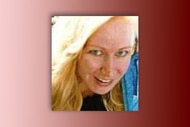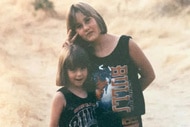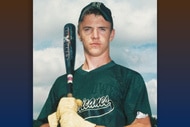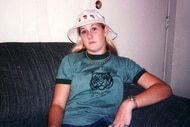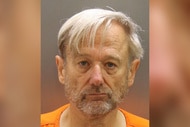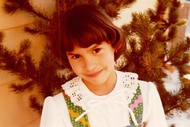Create a free profile to get unlimited access to exclusive videos, breaking news, sweepstakes, and more!
'Why Isn’t There A National Outcry?': As Gabby Petito Case Has Captivates The Nation, People Of Color Seek Same Attention
Families of missing people of color say their stories are just as important as the Gabby Petito case, and they want more media attention.

Akia Eggleston was eight months into a high-risk pregnancy when she disappeared four years ago in Baltimore. Family and friends said she was excitedly planning a gender reveal baby shower, set for May 6, 2017.
They gathered for the shower, but Eggleston never appeared. That’s when many knew something was terribly wrong — the mother of a then 2-year-old daughter and two younger siblings would never have abandoned her family. (Eggleston's case was featured in Oxygen's "Searching For" series. You can learn more about the case here.)
Four years later, Eggleston’s family is still awaiting her return.
“It has been painful all around,” Angelique Eggleston, her stepmother, who prefers the term “bonus mom,” told Oxygen.com. "Gabby Petito's disappearance made national breaking news, so why isn’t Eggleston's case just as important? Why don’t Black and brown people matter? Why isn’t there a national outcry? Something is wrong when a pregnant goes missing into thin air.”
Angelique Eggleston’s frustration is shared by many Black and brown families with missing loved ones across the country who have to watch the saturation of coverage of the Petito case.
Toni Jacobs did what she always does when she heard about Petito: posted it on her Facebook page. But her agitation grew as the coverage intensified. Jacobs’ daughter, Keeshae, disappeared nearly five years ago in Richmond, Virginia on September 26. She was 21 years old.
“I get pissed when I see other Black and brown people missing, and they don’t get this coverage,” she told Oxygen.com. “It hurts my heart. They don’t think we’re relevant. They don’t think we matter.”
Jacobs, as have other families, offered her condolences to Petito's family. They understand their heartbreak, but they also want to see more coverage and more attention for people of color that go missing.
Natalie Wilson, co-founder of the Black and Missing Foundation told Oxygen.com that her organization has been sounding the alarm about the disproportionate numbers of Black and brown missing people in America since it was founded in 2008. She said progress has been made, but much more is still needed.
Wilson said that cases of missing Black girls are often treated as runaways by police and given less attention.
David Robinson II has been fighting to bring attention to the case of his son, Daniel Robinson, a 24-year-old geologist, who was last seen on his job in the Phoenix area on June 23, as previously reported by Oxygen.com.
Robinson told the Washington Post that before he heard about the Petito case, he watched the number of people who go missing in Arizona every year.
“I missed how many people of color and Native Americans — especially women — go missing. I had never known those things until it happened to me. It seems we’re being somehow ignored, I guess. Like [people of color] are seen as less important.”
For some, the Petito case and the intense media coverage is just the latest example of “Missing White Women Syndrome,” a reference to the disparity of coverage among missing whites and people of color. It’s based on a 2016 study published by the Northwestern University School of Law in 2016. The term was coined by the legendary late TV news anchor Gwen Ifill at a 2004 conference called Unity: Journalists of Color.
“If there’s a missing white woman, you’re going to cover that every day,” she joked.
“As a culture, we are readily willing to accept stories about white folks as victims as something we should care about,” Zach Sommers, a criminologist, and author of the study told CNN. “When we see a white person who has gone missing, we say that could be my daughter, neighbor or cousin or friend … and they identify with that person and are more likely to read the story than we would if it were a person of color.”
While the media focuses on missing white women, the numbers reveal something different: Black and Native Americans represent a disproportionate share of active missing person cases. According to the FBI’s National Crime Center Information data from 2020, 35% of missing person reports are Black, but only 13% of the U.S. population is Black.
Whites represent 76% of the U.S. population and 54% of missing person cases.
As Oxygen.com previously reported, in Wyoming, the same state where Petito’s remains were found this week, more than 700 Indigenous people, mostly women and girls, were reported missing between 2011 to 2020, according to a report published in January by the state’s Missing and Murdered Indigenous People Task Force. About 85% were children and 57% were female.
Michelle N. Jeanis, an assistant professor of criminal justice at the University of Louisiana at Lafayette, who focuses on the relationship between crime, news and entertainment media, told Oxygen.com that a variety of factors contribute to the lack of media attention.
“The short of it is, missing persons case exposure may just be one of the many ways in which individuals of color are more likely to be disadvantaged in the U.S., due to long-standing systemic biases," she said.
Jeanis added that that bias certainly plays a role in many levels of the process that shapes coverage and engagement, and more research is needed to determine the exact role.
Eggleston said she just wants to bring her daughter home and for her to get justice.
“If doesn’t end the way we want …. we just want to bring her home,” she told Oxygen.com.
This Sunday is the fifth anniversary of Jacobs’ disappearance. Her mother plans to send the day like she has every anniversary bringing awareness to her case. She plans to invite family and friends to a balloon release.
“I don’t believe in my heart that she’s gone. I’ve got to keep fighting for her,” she told Oxygen.com. “Who else will fight for her, if her mother won’t. I just want my daughter home. I just want my daughter home.”


